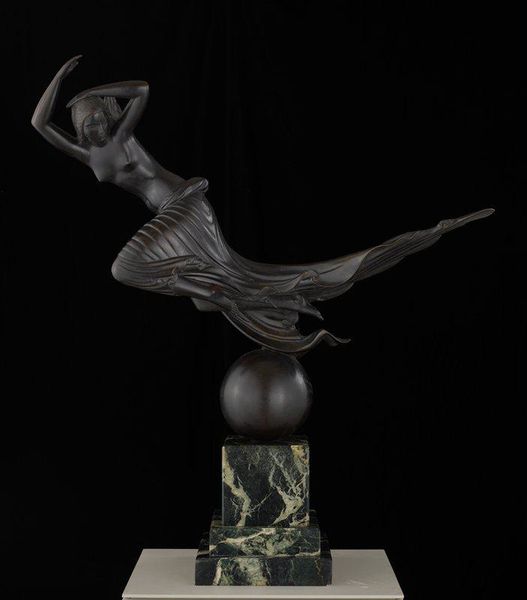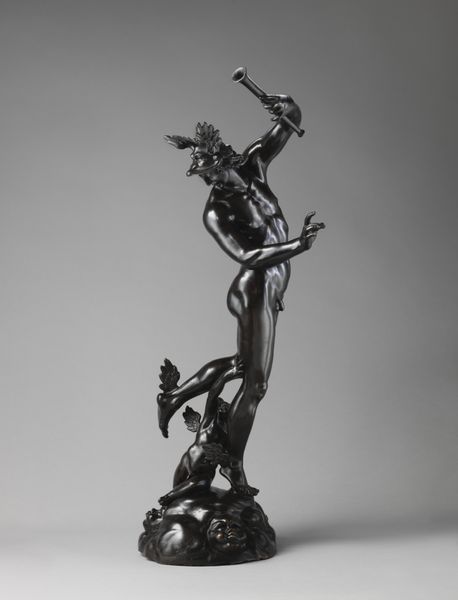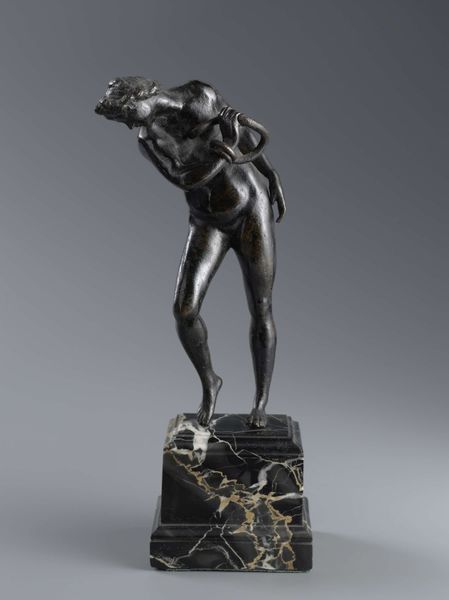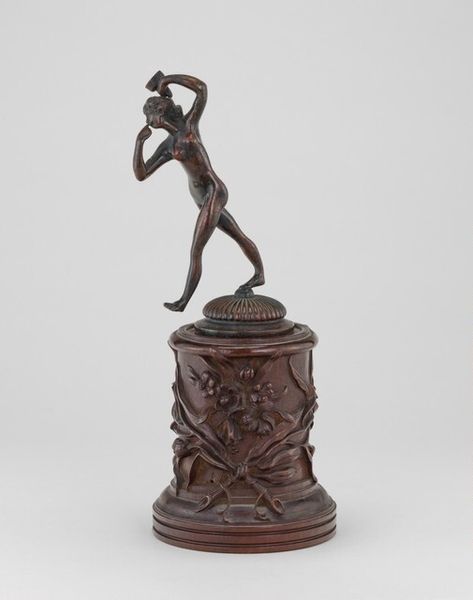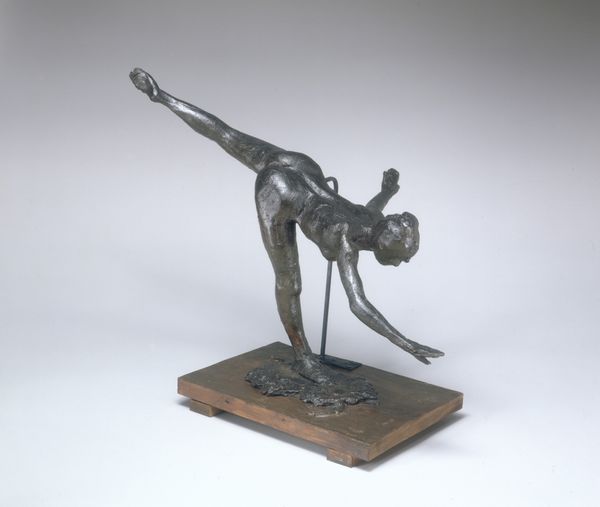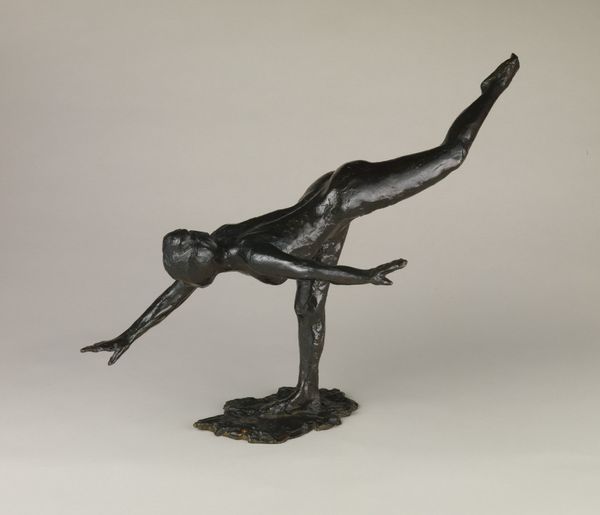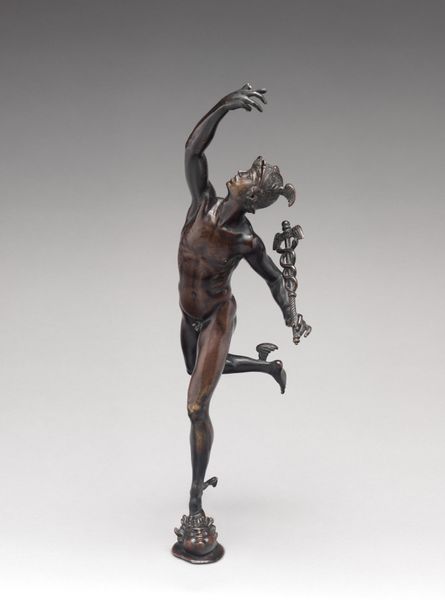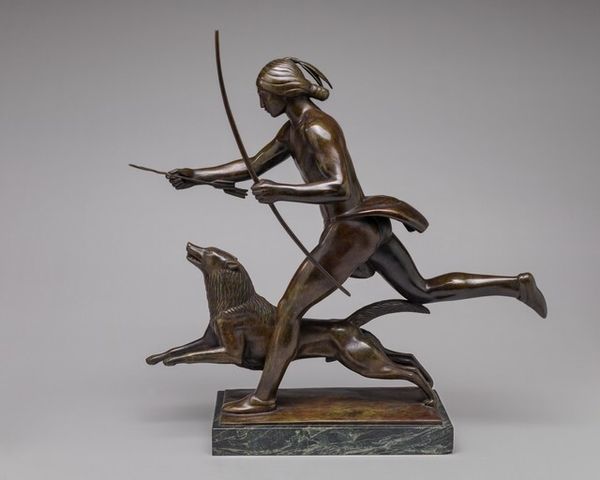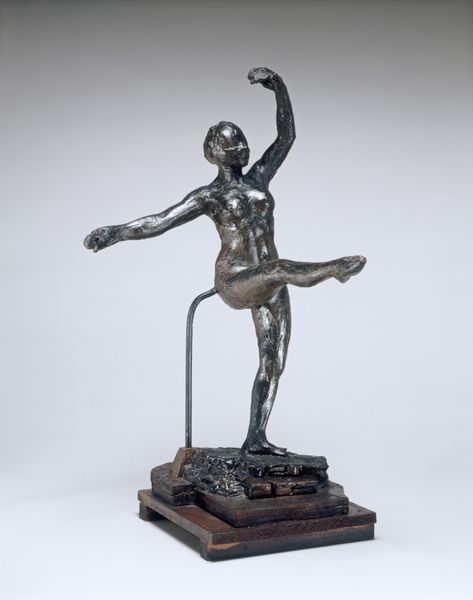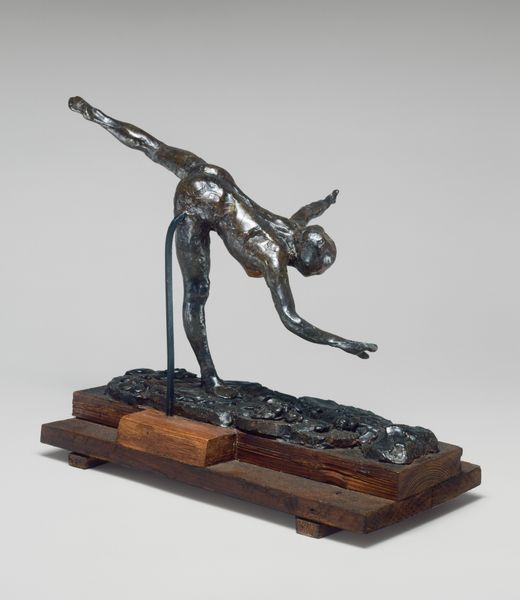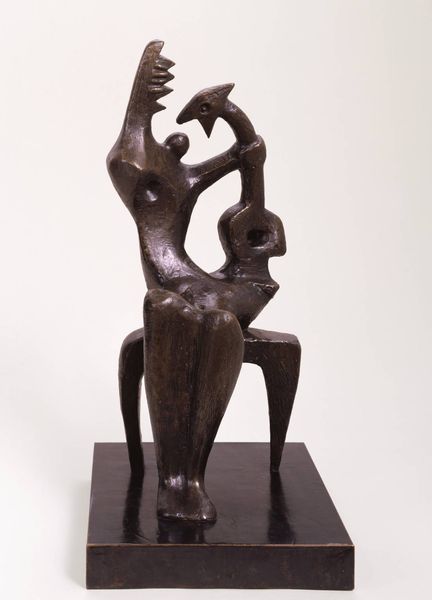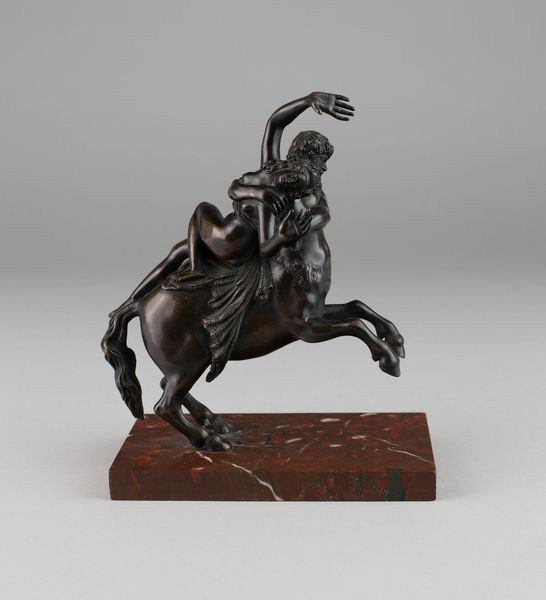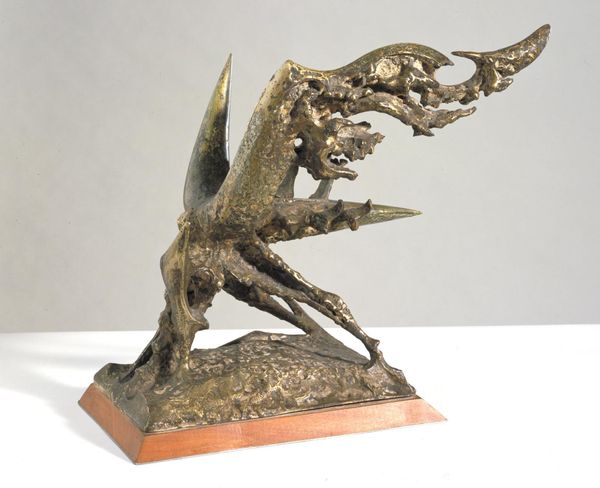
bronze, sculpture
#
art-deco
#
sculpture
#
bronze
#
figuration
#
geometric
#
sculpture
#
nude
Dimensions: overall: 88.9 × 78.74 × 23.5 cm (35 × 31 × 9 1/4 in.)
Copyright: National Gallery of Art: CC0 1.0
Curator: Welcome! We're here today to explore Paul Manship’s striking bronze sculpture, "Flight of Night," crafted in 1918. What strikes you immediately about this work? Editor: The dynamism is palpable. The figure is caught mid-flight, with a geometric and almost aerodynamic grace. The entire piece seems poised for perpetual motion, evoking themes of power and possibility from a particular position in culture at that time. Curator: Indeed. Manship expertly uses curvilinear forms to suggest movement and the inherent properties of bronze. Notice how the draping fabric and outstretched limbs create sweeping lines and rhythms. Editor: The figure's near nudity contributes, I think, to a sense of vulnerability alongside that power. Placed above a geometric design and shape, it suggests an intentional comment on the relationship of nature versus industrial innovation during and after the First World War. Who has access to this 'flight'? Curator: That is interesting. While we interpret this work through many viewpoints, from a Formalist perspective the smooth texture of the bronze plays against the sharply defined geometric lines of the base creating that point. And Manship’s use of contrapposto lends balance and counterpoint to the otherwise directional form. Editor: Perhaps contrapposto and "balance" is a reach, given her hand shielding herself from her own trajectory. The 'balance' serves an elegant comment to social dynamics within 1918's socio-political landscape, but a balanced one it is not. The choice to center a female figure as a signifier to what takes "flight," asks a potent question as the Western world moves into the 'roaring' twenties. What parts of humanity is actively and continuously forced into flight from its time and resources, so other powers can rise above it all? Curator: I see what you're getting at, but I can not find this in the form itself. The artwork remains in its period, to me, more a signifier of art deco movement than a societal qualm. In its very nature, Manship has rendered a composition that captures a spirit of forward motion while it remains forever fixed. The piece embodies both energy and stillness. Editor: Manship's statue really underscores how historical context is always swirling with an artwork’s structural DNA. Curator: Exactly, art is not created in a void and Manship’s piece leaves a legacy through a variety of views.
Comments
No comments
Be the first to comment and join the conversation on the ultimate creative platform.
